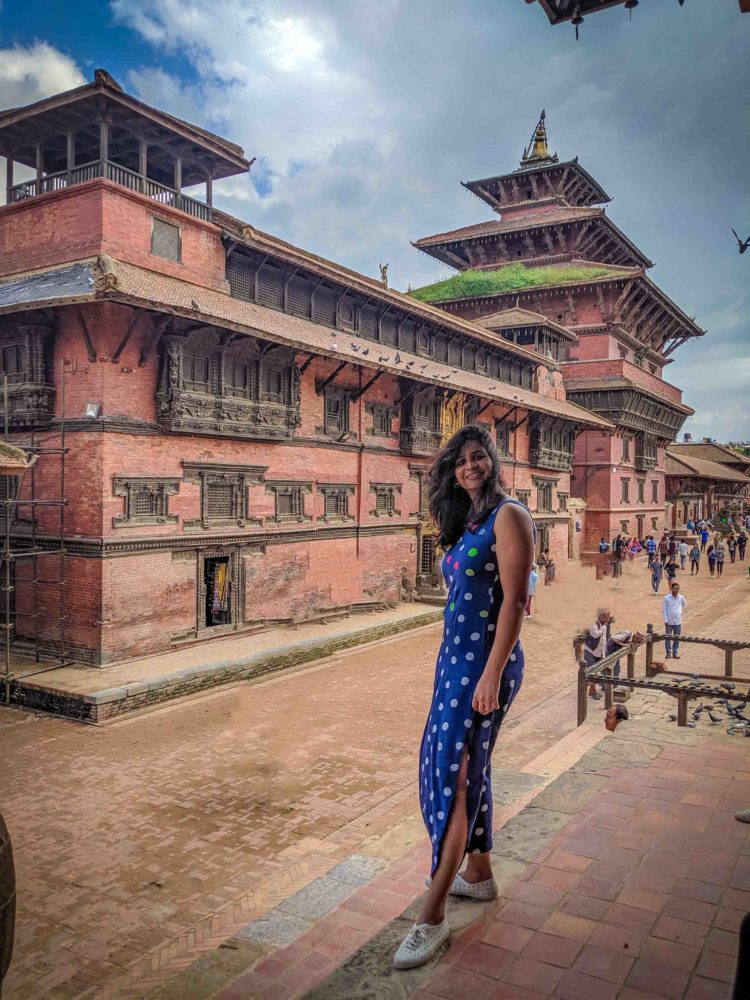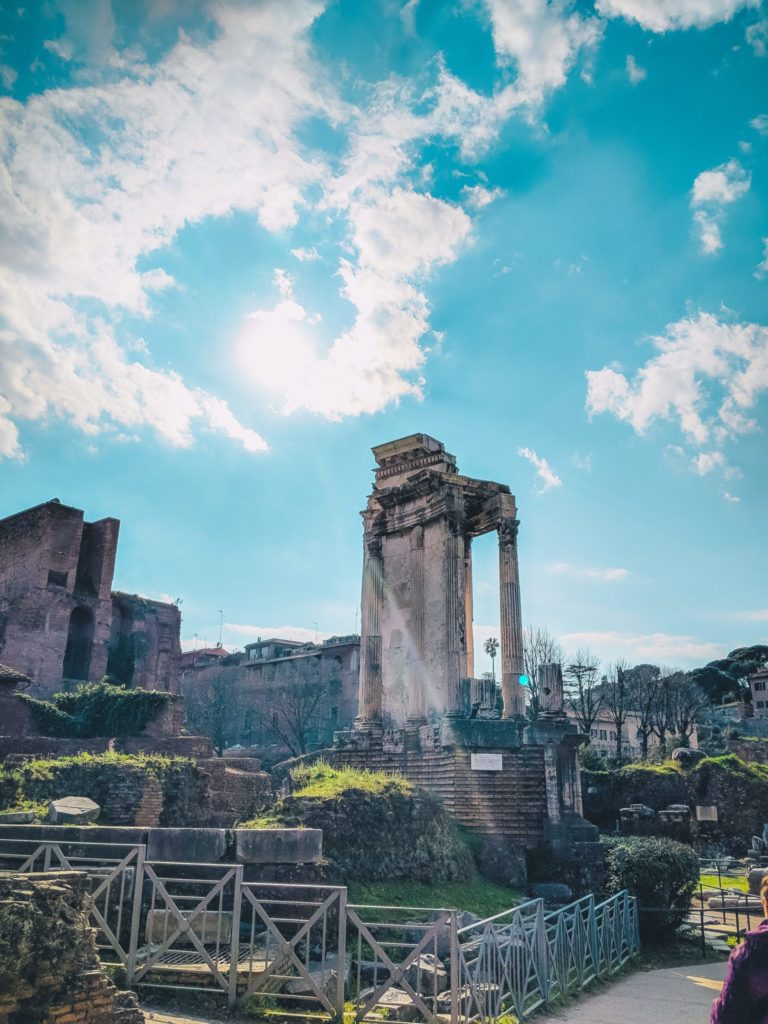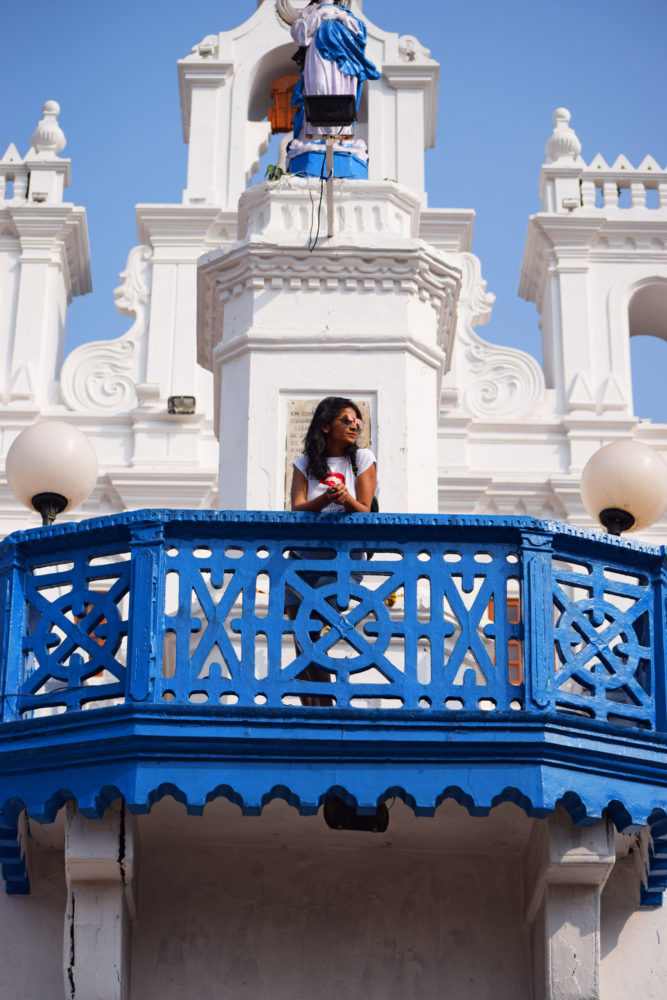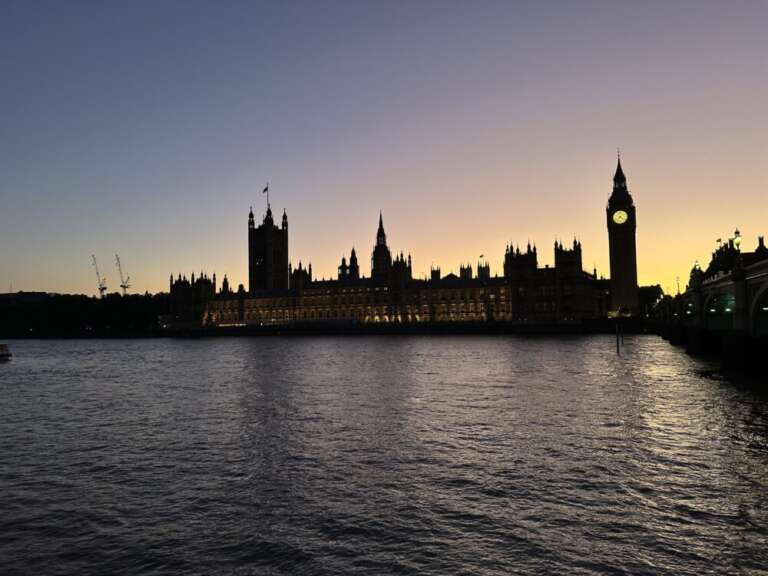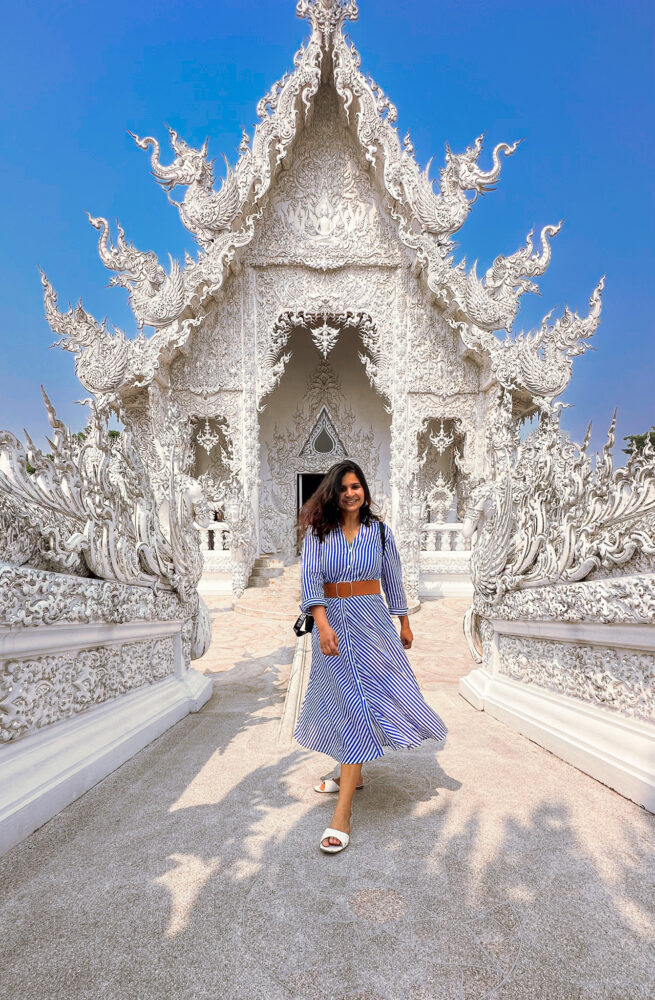10 things you should not miss in Hornbill Festival
The Hornbill Festival, held in Nagaland, is a grand and lively celebration that is not to be missed. It is an event that features a wide array of activities, including music, dance, and art performances. There is a plethora of things to do and enjoy during the festival, making it a truly immersive experience.
The festival begins early in the morning, around 9:30 AM, and the schedule of events is generally consistent from day to day. However, the performers, musicians, and tribes that participate in the festival do change on a daily basis. To experience the Hornbill Festival fully, we recommend spending at least 3-4 days there.
Below is a list of must-do activities during the festival:
10. Naga Shawls and Costumes
The traditional attire of the Naga is crafted with consideration for their past. Additionally, headgear and clothing are made from hornbill feathers. The 16 tribes all have distinctive clothes.
Shawls from the Naga people may make stunning mementos. Each tribe’s shawls have a distinctive design. The design of the shawl also represents the wearer’s place in the community. Looking at the shawl the individual is wearing will help you determine his or her social standing.
The shawls offered to visitors do not necessarily need to be as ornamental, even if Naga shawls are highly intriguing since they weave the social fabric as well. The Naga Shawls are typically well-crafted and produced in vivid colours.

9. Naga Bead Jewellery
The Nagas have several decorations on them. The majority of them are constructed of bead, wood, silver, brass, ivory, and animal bone. Many cultures have a long history of hunting, and they use dyed animal hair to decorate themselves.
Even if you can’t purchase bone jewellery, you can buy and test a piece of beaded jewellery.

8. Buy some Souvenirs
Nagaland is a vibrant region. There is a riot of colour everywhere since there are so many different tribes and their vibrant costumes. The Morungs sell their handmade goods and original artwork during the Hornbill Festival. These handmade items are pretty lovely, and purchasing them directly benefits the locals. So don’t be afraid to treat yourself to a few trinkets.

7. Enjoy the music and concert
Not mentioning the music of the Hornbill Festival would be unjust. Western music is well-known in Nagaland. In fact, rock music is popular throughout the Northeast. There will also be some rock music acts during Hornbill Festival.
The Great Hornbill Rock has replaced the Hornbill International Rock Contest, which has been terminated since 2019. Rock bands from all across India used to participate in it and compete for a good reward when it was formerly hosted at the Hornbill Festival location. Regular performances will still take place in Kisama, while Kohima will host many events at other locations.
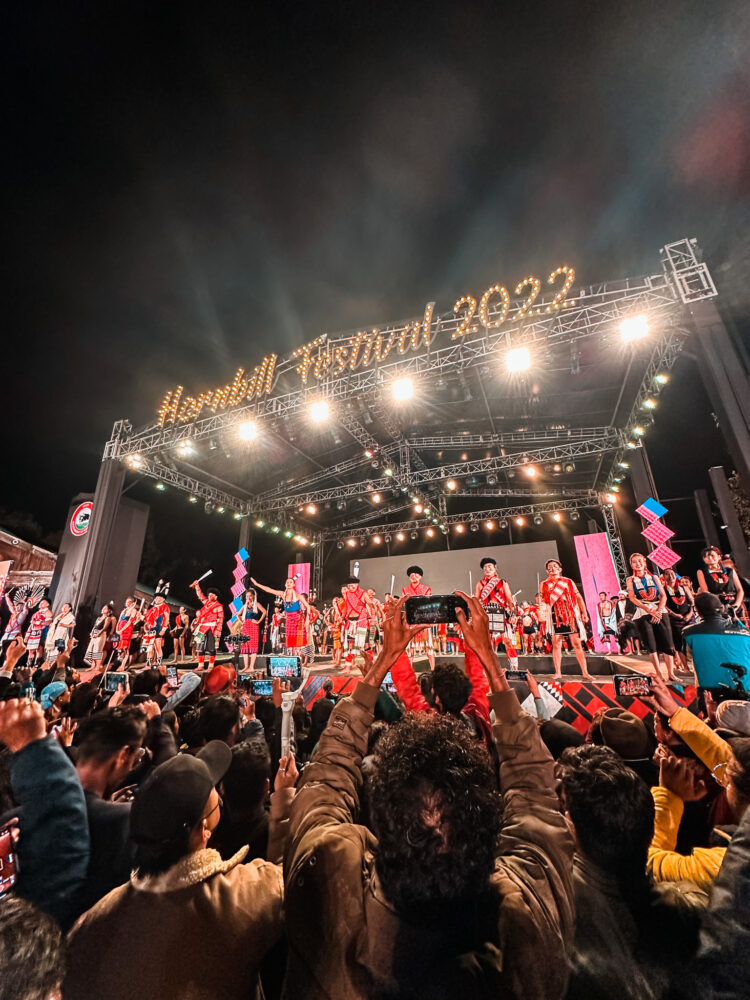
6. Have some rice beer
After enjoying the delicious Naga meal, wash it all down with a drink of the regional rice beer. Although alcohol is prohibited in Nagaland, you can still drink at the Hornbill Festival. Enjoy the native rice beer, which is the preferred beverage there. It is also reasonably priced.
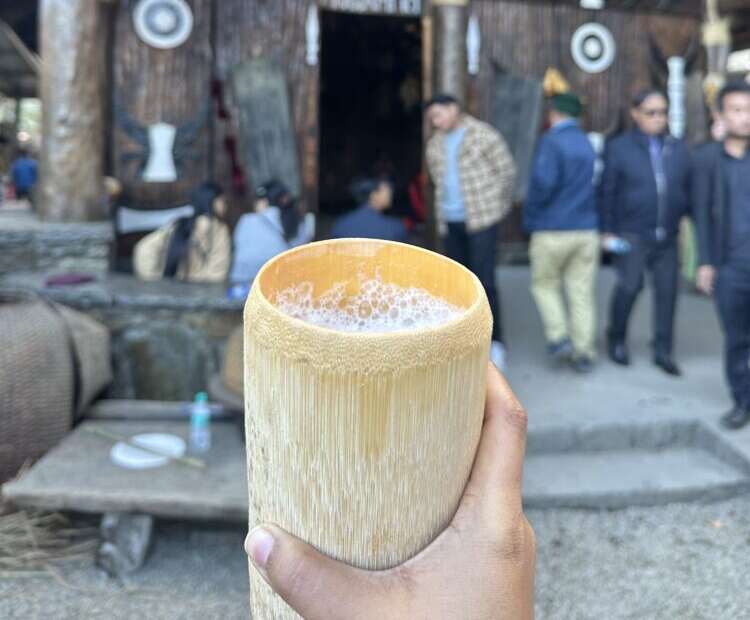
5. Taste the authentic Naga delicacies
Food is a significant aspect of travel and experiencing local cuisines allows one to immerse themselves in the culture. The Hornbill Festival in Nagaland celebrates traditional Naga cuisine, making it a paradise for food lovers, particularly those who enjoy non-vegetarian dishes. At the festival, visitors can taste traditional Naga food prepared by each of the tribes at the Morungs, where they can also interact with the elders and learn about the history and culture of the area. Food competitions, such as chili and pork eating, are also held during the festival, providing an opportunity for visitors to try new and unique dishes.
A wide variety of food items including pork preparations, chicken with bamboo shoot, rice cakes, and chutneys are available, and some may require an acquired taste to appreciate fully.

Vegetarians need not worry as there are also options for them, including a variety of rice cakes and a farmers market at Hortispace, where local produce can be purchased. Overall, the Hornbill Festival is a great opportunity for food enthusiasts to indulge in the delicious and unique flavours of Naga cuisine.
4. Enjoy the amazing cultural performances
The cultural performance at the Hornbill Festival is undoubtedly the most captivating and prominent aspect of the event. Each day, the various tribes take turns to showcase their traditional dances and songs on the festival grounds. This is an experience that should not be missed.
Each tribal community presents their unique folk dance, accompanied by a brief explanation of the dance and the occasion being celebrated, whether it be a festival, harvest, marriage, war, or victory dance. The dancers are dressed in colourful attire and adorned with stunning headgear. The dances, paired with equally diverse folk music, transcend all cultural boundaries. As a spectator, you will be entranced and amazed by the well-synchronized choreography, and you will understand why the Hornbill Festival is referred to as the “Festival of Festivals.”

In addition to showcasing traditional dances from Nagaland, the Hornbill Festival also features dances from other north-eastern states, such as the Bihu dance from Assam, the Wangala dance by the Garos of Meghalaya, and the Manipuri dance, among many others. The entire presentation is a visual feast that should not be missed.
3. Have conversations with different tribes
When visiting a Morung, it is highly recommended to engage in conversation with the various tribal communities that inhabit the area. Take the opportunity to ask them about their way of life, their culture, and their experiences from the past, including their headhunting days. These communities are often more than willing to share their stories and experiences with curious visitors.
One of the best times to initiate these conversations is during the first day of the Hornbill Festival. On this day, the cultural performances usually take place in the evening and the atmosphere is filled with a sense of joy and celebration. This makes it an ideal time to approach the communities and strike up a conversation.

Additionally, visiting the Morungs during the practice sessions of the cultural performances is another great way to gain insight into the communities’ way of life. Not only will you be able to witness first-hand the preparations that go into the performances, but you will also have the opportunity to take some stunning photographs of the practice sessions.
2. Send a postcard to yourself
Found this cute little post office stall in Hornbill festival 2022, Nagaland.
We always get fascinated by post offices located at the highest peak or the last village, but this was also a unique place to have one.
You can opt for speed post, normal post or international post. I opted for a normal post which was just 25 INR. I wrote a postcard to myself, because I have never received a postcard in my lifetime, and always wanted to experience how it feels to get one.
This was located in the market area, which is called Bamboo Pavilion next to the main arena. They had Naga tribal postcards, which were colorful and had a variety of options to pick from.
Do not miss this one out next year at Hornbill Festival 2023.

1. Visiting the Morungs
Visiting the Morungs during the Hornbill Festival is a must-do for anyone looking to immerse themselves in the rich culture and traditions of the Nagaland people. The ideal time to visit is in the early morning, prior to the start of performances, as this is when the performers are getting ready and you can capture some beautiful portraits. However, it is important to always ask for permission before taking photographs as, while there may be many photos on display, the right to photograph is not always explicitly granted. The Morungs are communal spaces within the villages of Nagaland where young boys are sent to learn about their village and tribe’s history, heritage, and culture. They are taught the art of singing and dancing, as well as the legends, folktales, and stories of the past that have been passed down through generations.


Things You Need To Know About Nagaland
Nagaland, a state in north-eastern India, is known for its stunning natural surroundings and rich cultural legacy. The state is home to the Naga people, an ethnic community with a rich history and culture that is bordered by Myanmar, Assam, Arunachal Pradesh, and Manipur in India. The state attracts tourists because of its beautiful landscapes,

Things to do in Dzukou Valley
Located on the border of Nagaland and Manipur in north eastern India, Dzukou Valley is a stunning and peaceful region known for its breathtaking views of the Himalayan mountain ranges and its diverse flora and fauna. At an altitude of 2,452 meters, this hidden gem is home to rare orchids, medicinal plants, and exotic birds.

Hornbill Festival Nagaland 2022: All You Need To Know For An Unforgettable Trip
The Hornbill Festival is an annual cultural extravaganza held in the state of Nagaland, India. The Hornbill Festival is also known as the “Festival of Festivals” and is a grand celebration held annually. It features a wide range of cultural activities such as traditional dances, music, sports, food fairs, and exhibitions. The festival is named
The Hornbill Festival in Nagaland is a magnificent occasion that highlights the state’s varied culture and customs. Visitors get the chance to learn more about the culture and way of life of the Naga people. Traditional dances, music, and cultural presentations are just a few of the many performances that are available at the festival. Additionally available to visitors are traditional Naga food, arts and crafts, and sporting events. The Hornbill Festival is a wonderful opportunity for visitors to become fully immersed in Naga culture and have an unforgettable first-hand experience. It is a celebration of Naga’s rich legacy and combines traditional activities with contemporary ones. Anyone travelling to Nagaland must attend this event.


